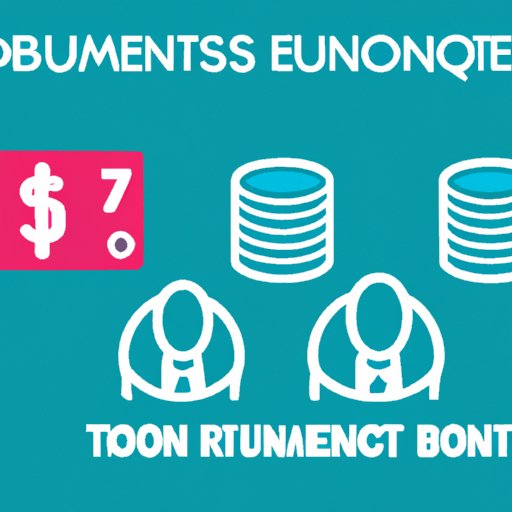Introduction
Retention bonuses have been increasingly used by businesses around the world to keep their key employees from leaving. Employers recognize the importance of their star performers who contribute to the growth of the company over a long period of time, and want to ensure that these employees stay under their employment. In this guide, we will delve into the ins and outs of retention bonuses, exploring what they are, how they work, why they are becoming more common in the workplace today, and their advantages and disadvantages for both employers and employees. Whether you are an employer thinking of setting up a retention bonus program or an employee considering accepting or rejecting a retention bonus offer, this guide is meant to provide you with all the information you need to make informed decisions.
Understanding Retention Bonuses: A Guide for Employers and Employees
Retention bonuses are a one-time payment given to employees as an incentive for them to stay with the company for a certain period of time, usually a year or more. A retention bonus is not the same as a signing bonus, which is given to employees when they first join the company, nor is it a performance bonus, which is given to employees at the end of each year based on their individual or team performance. Retention bonuses are instead geared towards rewarding employees for their loyalty and dedication to the company.
Companies offer retention bonuses for various reasons, including wanting to retain key employees who have specialized skills or experience, maintaining a competitive edge in a tight job market, mitigating the costs associated with employee turnover, and discouraging competing companies from poaching their employees.
The mechanics of a retention bonus are straightforward. An eligible employee is offered a lump sum of money, ranging anywhere from 5% to 25% of their base salary, upon completion of a set period of time, typically one year. The retention bonus is usually paid out in one lump sum, but can also be paid in installments, depending on the terms of the contract.
There are different types of retention bonuses, including the traditional cash bonus, stock options, deferred compensation, and retirement benefits. Each type has its own pros and cons, and employers should consider which type would best suit their objectives and budget.
Why Retention Bonuses Are Becoming More Common in the Workplace
In today’s fast-paced, competitive business world, employee loyalty is becoming increasingly harder to retain. Employees are often tempted by offers from other companies, and the cost of employee turnover can be significant for employers. The average cost of replacing an employee can range from 50% to 200% of their annual salary depending on their position and industry. By offering retention bonuses, companies can save on recruitment and training costs.
Another reason why retention bonuses are becoming more common is that job market trends have led to a shift in employee expectations. Today’s workers are more fluid and are willing to move between jobs more frequently than in the past. By offering retention bonuses, companies can offer their employees a sense of stability and security, which can go a long way towards building trust and loyalty.
Retention bonuses also provide businesses with an incentive to keep their top employees engaged and motivated. When employees feel valued and appreciated, they are more likely to take ownership of their work and be invested in the company’s success.

5 Benefits of Offering Retention Bonuses to Your Key Employees
Retention bonuses offer several benefits to both employers and employees. Here are five key advantages:
1. Increased employee motivation and job satisfaction
Retention bonuses can have a significant impact on employee motivation and job satisfaction because they demonstrate that the company values and recognizes the hard work and contributions of its employees. This sense of appreciation can motivate employees to work harder and be more dedicated to the company’s success.
2. Improved employee morale and loyalty
Retention bonuses can help improve employee morale and loyalty by providing employees with a sense of security and stability. When employees feel valued, they are more likely to stay with the company and contribute to its long-term success.
3. Reduced costs associated with employee turnover
Retention bonuses can be a cost-effective way for businesses to retain their key employees and mitigate the high costs associated with employee turnover. The cost of losing an employee goes beyond recruitment and training expenses and can also result in a loss of productivity, company knowledge, and customer relationships.
4. Attracting and retaining top talent
Retention bonuses can be a powerful tool for attracting and retaining top talent. When top performers see that the company offers retention bonuses, they are more likely to consider a long-term career with the company and to be less susceptible to outside offers.
5. Increased productivity and performance
Retention bonuses can have a positive impact on productivity and performance because they provide employees with an extra incentive to perform well and achieve long-term goals. Employees who are motivated by the prospect of a retention bonus are more likely to be engaged and invested in their work, which can help improve overall performance.
Negotiating a Retention Bonus: Tips and Strategies for Success
Employees who are offered a retention bonus may want to consider negotiating the terms of the offer before accepting it. Here are some tips for success:
1. Preparing for negotiations
Before entering into negotiations, employees should have a clear understanding of their value to the company and what they hope to achieve from the negotiation process. This can include researching industry norms for retention bonuses, their own performance and contributions, and their standing in the company.
2. Setting realistic expectations
Employees should be realistic about what they hope to achieve from the negotiation process. They should consider factors such as the company’s budget, policies, and the nature of the work they are doing. By having realistic expectations, employees can increase their chances of success and reduce the likelihood of disappointment.
3. Timing and delivery of the offer
Employees should also consider the timing and delivery of the offer. They should ensure that they have a clear understanding of the retention bonus program and its terms before entering into negotiations. It may be beneficial to have a third party, such as a legal professional, review the agreement before signing it.
4. Factoring in company budget and policies
Employees should be aware of the company’s budget and policies when negotiating a retention bonus. Employers may be more willing to offer higher retention bonuses to employees who are critical to the company’s success, but there may also be limitations on what can be offered.
5. Importance of seeking legal advice
Employees should consider seeking legal advice before entering into negotiations. A lawyer can review the agreement and ensure that the terms are fair and reasonable, and help employees understand their rights and responsibilities.
The Pros and Cons of Incentivizing Employee Retention with Bonuses
While retention bonuses offer many advantages, there are also some potential downsides to consider.
Advantages of retention bonuses
Retention bonuses offer a powerful incentive for employees to stay with the company over the long-term, which can lead to increased employee engagement, boosted morale and motivation, lower employee turnover, cost savings, and greater worker productivity and performance. They can also provide protection against outside poaching.
Disadvantages of retention bonuses
The disadvantages of offering retention bonuses include the potential for resentment from employees who do not receive bonuses or those who feel that they are inadequately compensated. They can also be expensive for employers, and it can be difficult to determine the right amount of the bonus. Additionally, retention bonuses may not be effective in all cases.
Creating a Successful Retention Bonus Program: Best Practices for Businesses
Businesses that want to create an effective retention bonus program should keep the following best practices in mind:
1. Defining program objectives and criteria
The first step in creating a successful retention bonus program is to define the objectives and criteria for the program. This includes deciding on which groups of employees are eligible for the program, the bonus amounts, and the time period over which the bonuses will be paid out.
2. Identifying eligible employees
Businesses need to identify their key employees who are critical to the company’s success. This can include employees who have unique skills or knowledge, those who are in leadership positions, and those who have a long tenure with the company.
3. Determining bonus amounts and timing
The next step is to determine the bonus amounts and timing. This should be based on a careful analysis of the company’s budget and policies as well as current trends in the industry.
4. Ensuring fairness and transparency
Retention bonus programs should be fair and transparent, with clear criteria for eligibility and payout. Employers should communicate the program clearly and consistently to all eligible employees.
5. Monitoring and evaluating program effectiveness
Businesses should monitor and evaluate the effectiveness of their retention bonus program on a regular basis. This includes tracking employee turnover rates, productivity, and performance, as well as soliciting employee feedback.
What You Need to Know About Retention Bonuses and Employee Engagement
Retention bonuses can be an effective tool for promoting employee engagement and increasing job satisfaction. However, there are other strategies that businesses can use to improve employee engagement:
The relationship between retention bonuses and employee engagement
Retention bonuses can contribute to employee engagement by providing a sense of security and stability, which can help create a more engaged and productive workforce.
How to gauge employee engagement and satisfaction
Businesses can gauge employee engagement and satisfaction through various means, such as surveys, feedback programs, and performance metrics.
Other strategies for increasing employee engagement
Other strategies that businesses can use to increase employee engagement include offering opportunities for professional development, fostering a positive workplace culture, providing recognition and rewards for employee achievements, and offering flexible work arrangements.
Conclusion
Retention bonuses are a valuable tool for businesses looking to retain their top talent and mitigate the costs associated with employee turnover. While they are not without their challenges, they offer a range of benefits to both employers and employees, including improved productivity, performance, and job satisfaction. Employers who are considering implementing a retention bonus program should carefully consider all of the factors involved, and should strive to create a program that is transparent, fair, and effective. Employees who are offered retention bonuses should consider negotiating the terms of the offer to ensure that they receive the maximum benefit.
